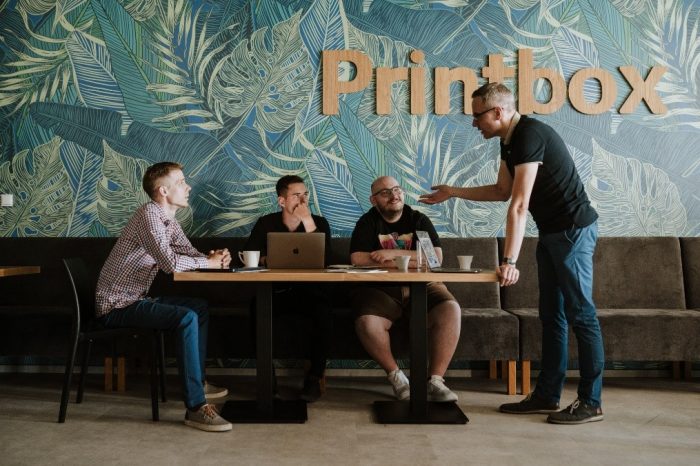How Smart Creation Transforms Photobook Design: Insights from Our Team Lead
In the ever-evolving world of personalized photobooks, customers often face the challenge of spending hours selecting, sorting, and arranging their photos to create a memorable product. But what if that process could be completely automated? We sat down with the team lead behind Smart Creation, Kasper Rybak, to learn more about how this revolutionary technology is changing the game in photobook creation.
How Smart Creation Works: A Conversation with the Team Lead
Smart Creation is an AI-powered photobook software that automates the creation of photobooks. Instead of manually selecting photos, choosing layouts, and making adjustments, all the user needs to do is upload their photos, and the algorithm takes over. It sorts the images based on factors such as date, location, and quality, and arranges them to tell a cohesive and beautiful story. According to the team lead, Smart Creation is not just about automation; it’s about making photobook creation more intuitive and accessible to everyone.

“Smart Creation removes the complexity and effort that often comes with creating a photobook. It’s a tool designed for anyone—whether you’re tech-savvy or not. You just provide the photos, and it automatically builds the structure. We wanted to make sure that creating a photobook is something everyone can enjoy without being overwhelmed by technical details,” says the team lead.
Time-Saving and Efficiency
One of the most significant benefits of Smart Creation is the time saved during the creation process. “We know that time is valuable, both for businesses and their customers. Our tool significantly reduces the time spent on designing photobooks. By automating the photo selection and layout process, we’ve seen users spend 60% less time on their projects,” the team lead explains.
For mobile users, the time savings are even more substantial. “Mobile Web users are spending 70% less time on their projects, which speaks volumes about how much easier and faster we’ve made the process.”
A Simple, Yet Powerful Tool for Storytelling
The beauty of Smart Creation is that it allows users to focus on what really matters—telling their personal story. “Creating a photobook isn’t just about putting together a collection of photos. It’s about crafting a story, capturing memories. With Smart Creation, the photos are intelligently grouped, and a beautiful narrative is created automatically,” says the team lead. “What’s left is for the user to add their personal touch. It’s a balance of automation and creativity.”
This technology isn’t just for those who want to create photobooks quickly; it’s also designed to enhance creativity. “Because Smart Creation handles the technical aspects, users can spend more time experimenting with designs, making their books truly unique,” the team lead adds.

What Sets Smart Creation Apart from Other Tools
So, what makes Smart Creation stand out from the competition? According to the team lead, it’s all about simplicity and flexibility. “We wanted to make it as easy as possible for users. We don’t ask them to jump through hoops. They upload their photos, and we do the rest,” says the team lead. “It’s all about creating a seamless experience for the user.”
Unlike other tools that often offer simple templates and layouts, Smart Creation supports more advanced themes and design elements. “Other solutions may provide basic collages, but we know that creating a photobook is more than just slapping pictures on a page. We handle complex themes, including frames, clipart, and text fields, to help users make their photobooks stand out,” the team lead explains.

A Personalized Experience
Another major point of differentiation is the adaptability of Smart Creation. “We understand that everyone has different needs. Whether a user has a handful of photos or a large collection of high-quality images, Smart Creation adapts to each situation,” the team lead says. “We tailor the experience based on the type of photos the user uploads, providing them with the best possible layout for their specific project.”
Looking Ahead: The Future of Smart Creation
As Smart Creation continues to evolve, its success is evident in the numbers. “In 2024, we’ve seen a 50% higher conversion rate for users who interact with Smart Creation, and that’s just the beginning,” says the team lead. With the increasing adoption of our solution, the photobook industry is seeing a shift toward faster, more efficient, and more personalized creation.
“We are committed to continuing to improve Smart Creation so that more people can easily create beautiful, meaningful photobooks. As we invest in the tool, we’re excited to see it grow and help even more people bring their memories to life,” the team lead adds.




